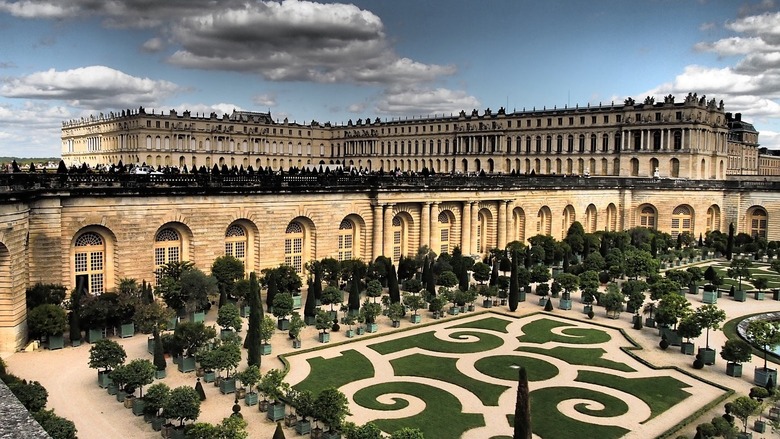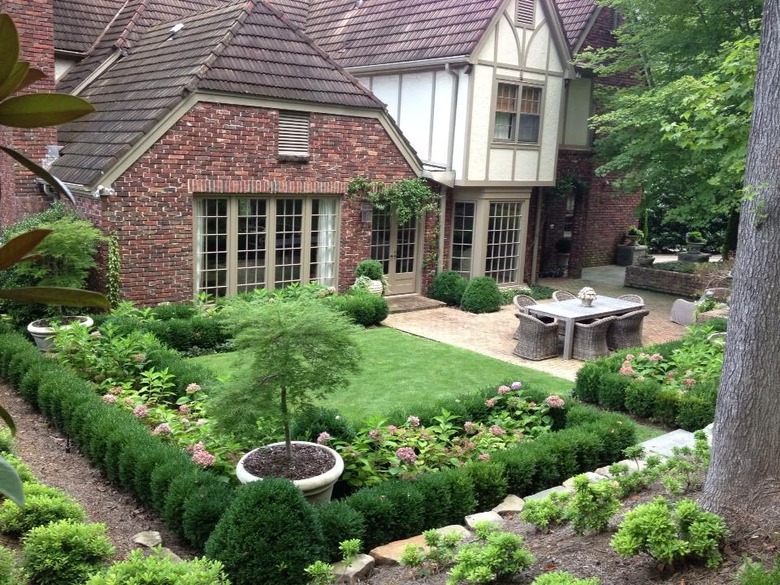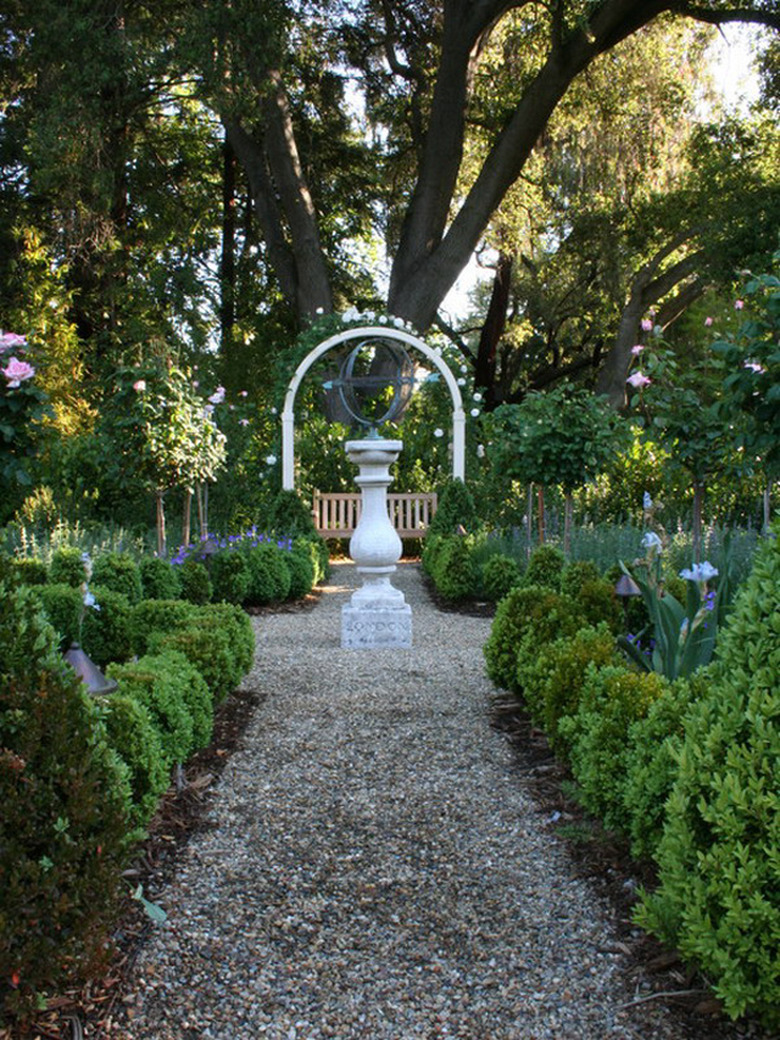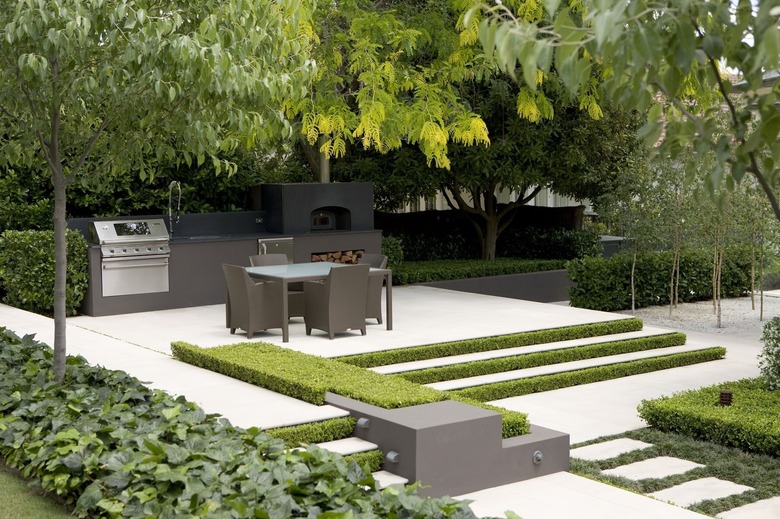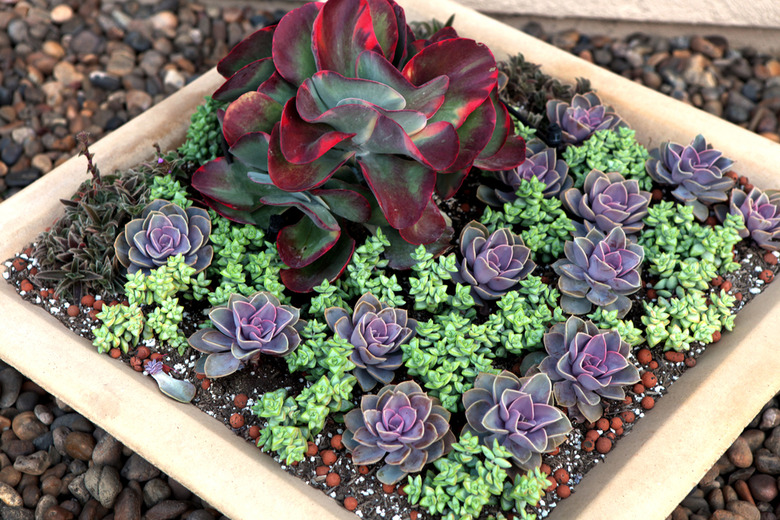Tips For Designing A French Garden
Where the English cottage garden is a celebration of barely contained chaos, French gardens are a demonstration of strict control over wildness. If your setting is such that you can gain an overview of the garden from an elevation or from a distance, so much the better. French gardens aim for a formal perfection that can best be appreciated from such a vantage point. Within the garden itself, the effect is calming, orderly, and graceful.
Achieving the geometrical order and symmetry that typifies French garden design requires careful planning and thorough preparation. If your garden site is fairly level, that's a good start. French garden designs are typically flat, with variations in height achieved through hedges and trees, raised beds and terraces. The orientation of pathways is critical in that the pathways determine much of the geometry and symmetry as they purposefully lead the eye, and the garden visitor, through garden "rooms" and toward points of interest. The Gardens of Versailles are the epitome and model for French garden design. You need not have thousands of acres to achieve a successful design or a chateau to anchor the plan, but the mathematical precision of a French style garden plays best against cleanly classic or coolly modern architecture.
The Start of Your French Garden Plan
The Start of Your French Garden Plan
Begin planning your garden with your house as the principal vantage point. Once you've determined the dimensions of your garden and staked out the perimeter, you can begin to divide the space. The overall size of your garden will determine, in part, the complexity of your plan. Remember that the desired effect of a French garden is spaciousness and serenity. Overcrowding it with too many elements interferes with that ambiance. Many French garden plans begin with a path that bisects the garden and sets the stage for its symmetry. Paths in a French garden are characteristically made from gravel, flagstone or cobblestone. There is no ideal width for that path, as that will be determined by the size of the garden, but the central path should feel generous.
Dividing Up the French Garden Planting Beds
Dividing Up the French Garden Planting Beds
Having established your central path, you can begin to divide the space with intersecting paths. Those paths might perpendicularly bisect the garden space or they might cross it at an angle. As long as every division on the left side is mirrored by one on the right, the decision is up to you. If your garden is large enough to allow it, you could also plan a perimeter walkway that runs parallel to the central avenue and across the top and bottom.
- Where the pathways intersect at the central axis, French gardens often feature a** focal point**—statuary, a fountain or reflecting pool, or perhaps a prominent raised bed—something that interrupts the flow of the pathway through the garden and keeps the eye within its boundaries.
- The matrix of paths determines the size and shape of the planting beds, called parterres, in the spaces between. As with the overall garden design, plantings in the parterres will be geometric and orderly and generally symmetrical left side to right side, often with clipped boxwood borders.
- Raised planting beds may be built up with edging of uniform stone or cement, preferably in a color that complements the path material.
- If you have the latitude to incorporate a terrace into your garden plan, do so. The terrace is where the garden in its entirety can be viewed and appreciated. It's also a place where, perhaps, one could place a table and chairs for al fresco dining and relaxing. In a modern context, a raised deck or offset patio could serve as your terrace, but take care through your choice of materials and the use of trellises and clipped shrubbery to integrate your terrace with the garden.
Color Your Garden French
Color Your Garden French
The characteristic color palette for French gardens is cool and restrained—greens, blues, lavender and gray. The gray comes from the gravel walkways, stone walls and edging, statuary and planters. Your plantings supply the predominant greens and lavenders. A gate or bench painted French blue can be striking. Apart from the trimmed boxwood edging and shaped shrubbery, the plant most closely associated with French gardens is lavender. If the growing conditions in your area favor lavender, incorporate it generously into your plan. Where the climate is unfriendly to lavender, there are lavender-like plants—catmint, dwarf Russian sage, Hummelo betony, or woodland sage—you can substitute successfully.
That's not to say that your French garden's colors must be strictly limited. Where the underlying "canvas" of the garden represents a unified field, deliberate spots of alternative color can be highly effective. Those spots of alternative color might come from sparingly placed plantings or from glazed ceramic pots. The elements you choose for your garden make it distinctive.
Having Your French Garden and Eating It Too
Having Your French Garden and Eating It Too
The plantings in your French garden need not be limited to the decorative. A parterre planted with a geometric arrangement of herbs and other edibles, known as a potager, is well within the formal garden's rich design tradition. If you have the room, and the climate to allow it, compact fruit trees can be incorporated into your garden design—a line of potted dwarf citrus, for example.
The symmetrical, geometric design of a French garden is more maintenance intensive than that of a less orderly garden style. With a highly symmetrical design, when something is out of balance, it's immediately apparent, and you need to be prepared for that before you embark on designing your French garden. Unlike a casual garden, a disorderly formal garden looks neglected, not charming. You can make your job easier by the plants you choose and how you control them. Look for plants with compact, determinate growth habits and plant them densely to inhibit weed growth. If you use climbing varieties, provide them with a trellis or other support that allows you to restrain them. Expect to trim hedges and shrubs regularly.
